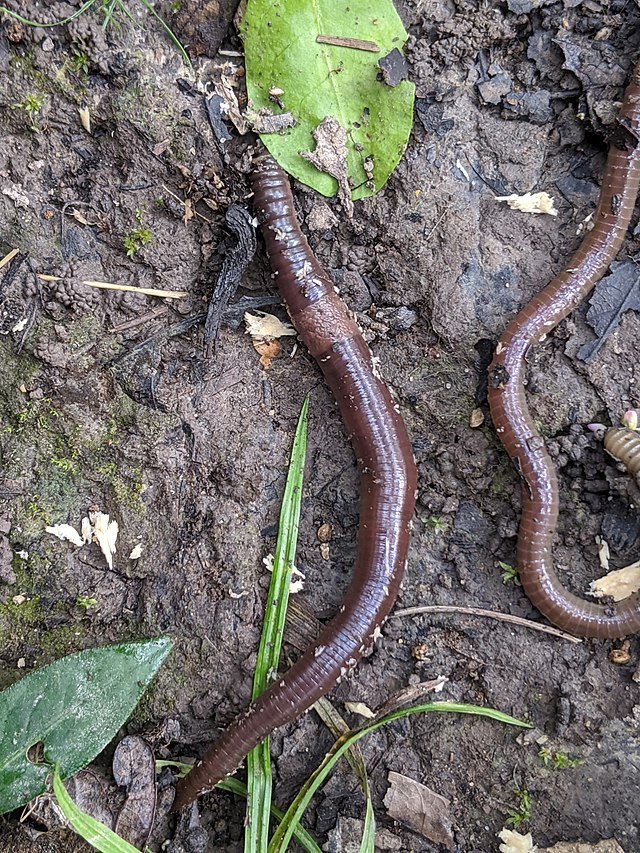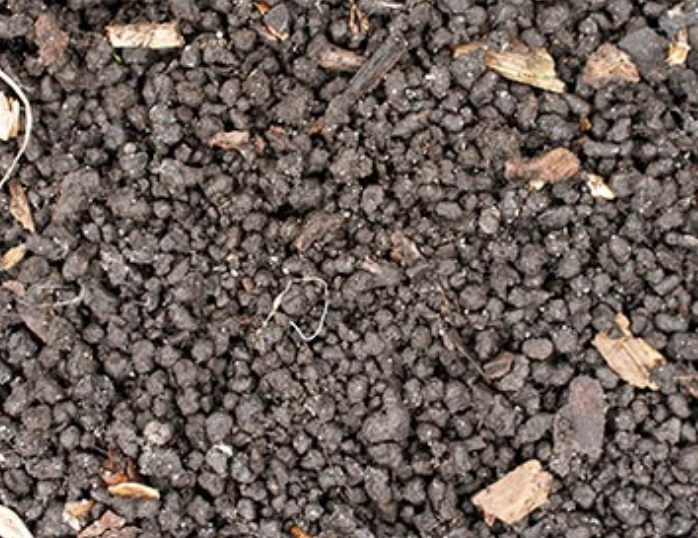Asian Jumping Worms
Amynthas agrestis
Did you know that every earthworm in New York is an invasive species from another continent? Native North American earthworms do exist in the southern U.S., but they went extinct in the north during the Ice Age, when this land spent thousands of years under a mile of ice. After the ice melted, plants and mobile animals recolonized quickly, but earthworms travel slowly. As a result, the ones that got here first were the ones brought by human colonists.
European earthworms became established centuries ago, and have changed the ecology of our forests. Asian earthworms, which arrived at the beginning of the 20th century, are changing them further. Just in the last decade, Asian jumping worms have become widespread in our area, and if you live in Westchester County but don’t have them on your property, you are probably the exception not the rule.
These grainy worm castings on the surface of the soil are a telltale sign of the Asian jumping worm.
Asian jumping worms, also sometimes called crazy worms, get their common names from their vigorous activity level. These are not the slow-moving worms you may remember from your youth. These worms thrash and slither. They do almost seem to jump at times. There are three different species in our area and one of them can grow extremely long – up to 6 inches. To learn to identify them, you can read this excellent article: http://warren.cce.cornell.edu/gardening-landscape/warren-county-master-gardener-articles/invasive-asian-jumping-earthworms
Most of us have been told all our lives that earthworms are good for the soil, so it can be confusing to hear they are now a problem. The threat posed by Asian jumping worms comes from the speed of their spread, the sheer number of them in the soil, and the amount of plant debris they can consume and decompose. If you think of the soil as providing the basis for the entire forest ecosystem, you can see how an organism that alters soil structure might throw the ecosystem off balance. This is happening as the fluffy leaf debris that used to make up the top layer of forest soil, providing protection and nutrients for seeds and seedlings, is being eaten up by worms. Without that protective layer fewer seeds germinate, and fewer seedlings take root. This has long-term implications for the health of our forests.
What can we do? Unfortunately, at present there is no good solution to the problems posed by the jumping worms. Scientists are at work trying to learn how to control them, and the best we can do in the meanwhile is grow our gardens, wait for new information, and try not to make the problem worse by spreading the worms to uninvaded areas. If you already have them, at least you don't have to worry about getting them!
If you are lucky enough NOT to have them, and want to keep them out, be very careful about what you bring onto your property. It is safest not to bring any soil or compost from outside, including soil in potted plants, unless you know it has been sterilized first. The worms' egg cases are tiny and travel easily. To keep your soil worm-free, it might be wisest to grow your plants from seed, and make your compost on site.

